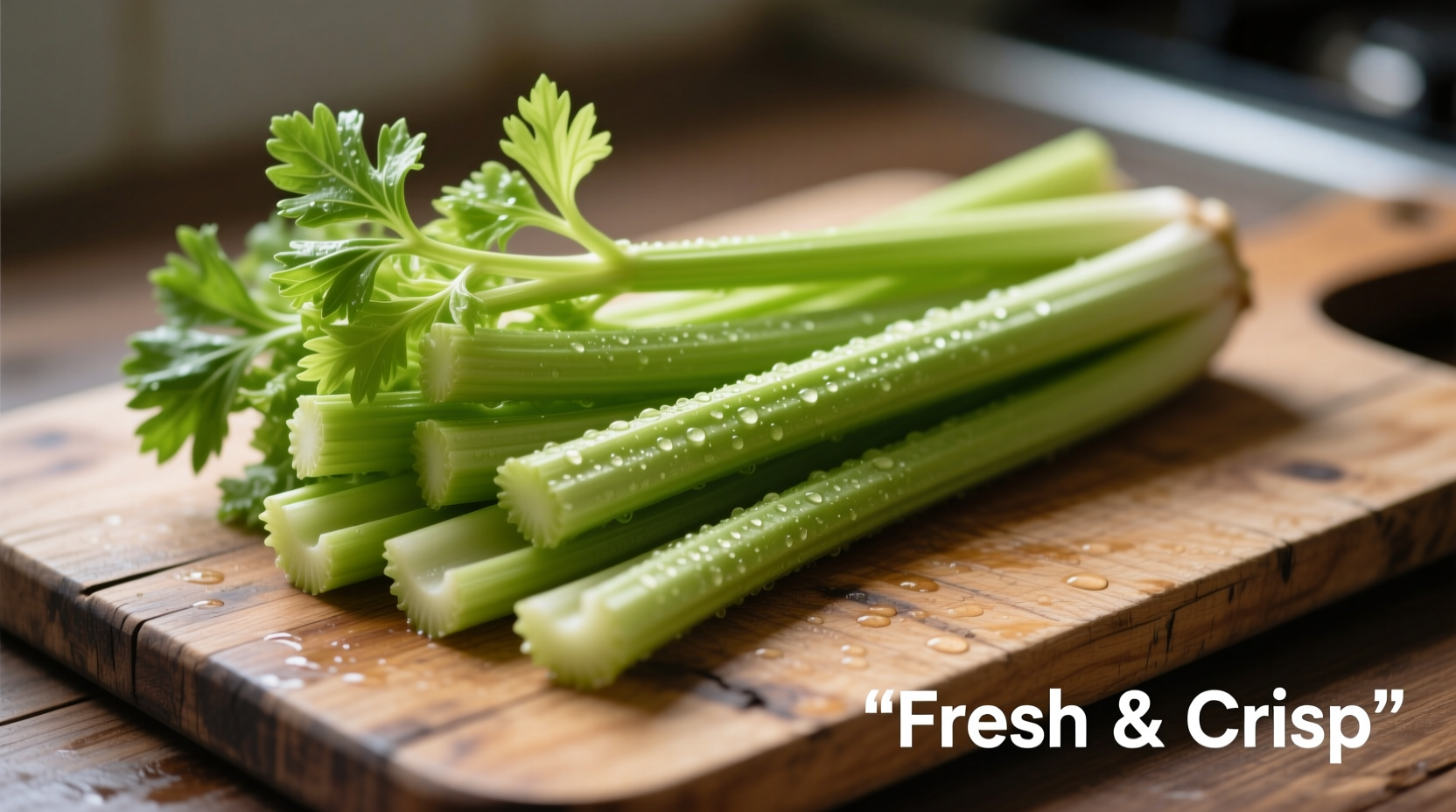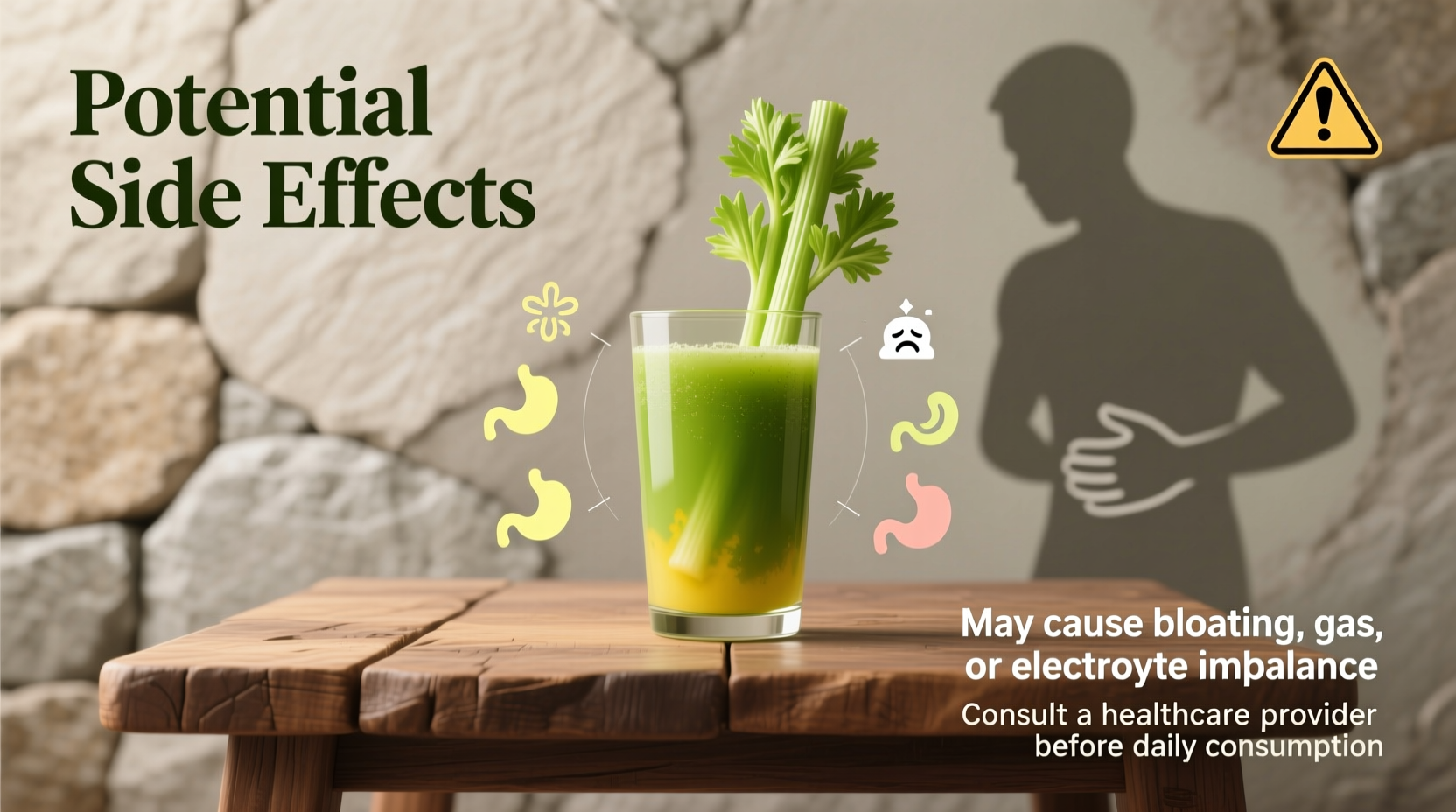Despite its popularity as a health trend, celery juice isn't risk-free. Understanding the potential negative side effects of celery juice is crucial for making informed decisions about incorporating it into your diet. This evidence-based guide separates fact from fiction and provides practical guidance for safe consumption.
Who Should Approach Celery Juice with Caution
While many people drink celery juice without issues, certain groups face higher risks. Individuals taking blood pressure medications, those with kidney conditions, and people prone to allergic reactions should consult healthcare providers before making celery juice a daily habit. The concentrated nature of juice amplifies both benefits and potential risks compared to eating whole celery.
Documented Side Effects of Celery Juice
Allergic Reactions and Photosensitivity
Celery belongs to the Apiaceae family, which includes carrots, parsley, and fennel. Some individuals experience celery allergy, with symptoms ranging from mild oral itching to severe anaphylaxis. According to the National Institutes of Health, celery ranks among the top food allergens in Central Europe.
Additionally, celery contains psoralens—compounds that increase photosensitivity. Consuming large amounts before sun exposure can lead to phytophotodermatitis, a skin reaction causing redness, blisters, and hyperpigmentation. This risk is particularly relevant for those who drink celery juice in the morning and spend time outdoors without adequate sun protection.

Blood Pressure Medication Interactions
Celery contains phthalides, compounds that may lower blood pressure. While this benefits some, it creates potential celery juice interactions with blood pressure medications. When combined with antihypertensive drugs, celery juice could cause blood pressure to drop too low, resulting in dizziness, fainting, or other complications.
The Mayo Clinic advises patients on blood pressure medication to discuss celery juice consumption with their healthcare provider, as individual responses vary significantly.
Kidney Stone Risk from High Oxalate Content
One of the most concerning negative side effects of celery juice relates to its oxalate content. Celery contains moderate levels of oxalates, which concentrate when juiced. For susceptible individuals, this can contribute to calcium oxalate kidney stone formation.
| Food Form | Oxalate Content (per 100g) | Risk Level for Kidney Stones |
|---|---|---|
| Whole celery stalk | 10-20 mg | Low |
| Celery juice (8oz) | 80-160 mg | Moderate to High |
| Recommended daily oxalate limit (for at-risk) | 50-100 mg | N/A |
According to research published in the National Kidney Foundation, individuals with a history of kidney stones should limit high-oxalate foods. Drinking celery juice daily could push oxalate intake beyond safe thresholds for vulnerable individuals.
How Much Celery Juice Is Too Much?
There's no established safe upper limit for celery juice consumption. However, most reported side effects occur with daily consumption of 16+ ounces. The concentrated nature of juice means you're consuming the compounds from multiple stalks in a single serving.
Nutrition experts generally recommend:
- Limited to 4-8 ounces once daily if trying celery juice
- Consuming with other vegetables to dilute compounds
- Taking breaks (e.g., 2-3 days per week off)
- Never replacing balanced meals with celery juice
Who Should Avoid Celery Juice Completely
Certain individuals should avoid celery juice due to significant risks:
- People with known celery or carrot family allergies
- Those taking blood pressure medications without medical approval
- Individuals with kidney disease or history of kidney stones
- Pregnant or breastfeeding women (due to limited safety research)
- People scheduled for surgery within two weeks (due to potential blood pressure effects)
Safe Consumption Practices
If you choose to drink celery juice, follow these evidence-based guidelines:
- Start with small amounts (2-4 ounces) to assess tolerance
- Avoid drinking immediately before sun exposure
- Monitor blood pressure if on related medications
- Stay well-hydrated to help process oxalates
- Consider rotating with other vegetable juices
- Consult your healthcare provider if you have underlying health conditions
When to Seek Medical Attention
Contact a healthcare professional if you experience:
- Signs of allergic reaction (hives, swelling, difficulty breathing)
- Severe dizziness or fainting episodes
- Persistent digestive issues
- Skin reactions after sun exposure
- Painful urination or signs of kidney stones
Remember that celery juice side effects on kidneys may develop gradually, so monitor your body's response over time rather than just immediately after consumption.











 浙公网安备
33010002000092号
浙公网安备
33010002000092号 浙B2-20120091-4
浙B2-20120091-4